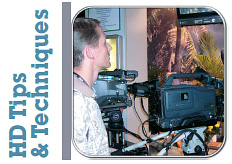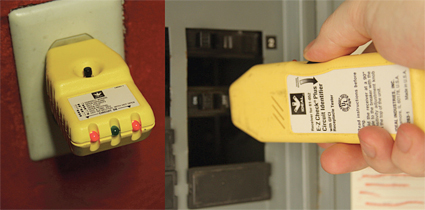Keeping the Lights On

LOS ANGELES—Whenever you're using equipment in a practical location, there is always a concern about power consumption. Especially if you're going into an office environment or even a private residence, with today's technology and sensitive computer equipment one blown breaker can mean a major hassle for the location owner and a black mark for you.
Understanding how to keep the lights on is not hard. It requires a basic understanding of electricity and just a little math (but we'll make it as simple as possible).
WATTS, VOLTS, AMPS AND OHMS
There are four main components of electricity, watts, volts, amps and ohms.
Watts are the measurement of the "work done" or the overall energy created, for all intents and purposes for any given component wattage is a constant. Volts are the measurement of the potential of electrical current between two points. Ohms are the measurement of resistance in any element to the flow of electrons. Amps, those are the ones you really have to pay attention to—amps are the number of electrons actually flowing past a given point in a given period of time.
Flowing electrons have the side effect of creating heat. Too much heat, of course, creates fire. Aside from electrocution, this is the biggest danger of electricity: Risk of fire. To help prevent that, every electrical component has an ampacity rating — that is, the highest number of amps that component can safely handle. In most situations that is going to be between 15 and 20 amps.

Careful testing is always your best bet when dealing with electricity. When you arrive at the location, it's a good idea to first check out the breaker box. Right on each breaker will be a printed ampacity. Generally you'll find 15 or 20 amp breakers in most residential and commercial locations. That, however, rarely means that you actually have the full 15 or 20 amps to work with. In a perfect world, you have an amperage meter that you can clamp on to your hot lines for each breaker and see what is currently being drawn off of that circuit. Barring that, you've just got to use caution and try to take visual inventory of what else is running in the location. Anything plugged in draws power: computers, TVs, clocks, radios, appliances, etc.
Another important factor—one that seems to surprise a lot of people—is that one circuit, protected by one breaker, covers a number of components within the location. Generally there are multiple outlets and lighting on each circuit (the exception is a red colored outlet—usually found in hospitals or around sensitive computer equipment—which is a dedicated circuit).
WHICH CIRCUIT?
Unfortunately, there is often no rhyme or reason to the way that buildings are wired. You could have half of a room on one circuit and half on another, or the entire room could be on one circuit. Often half of one room and half of another room will share the same circuit. There are really only two methods of knowing, for sure, what outlets are on any particular circuit. The simplest, yet most intrusive method, is to turn the breakers all off and start turning them on one-by-one and checking the outlets. This is best done in a two-man team with one in the location at the outlets with a circuit tester or a simple lamp and one at the breakers. As the breakers are turned on you label the individual outlets (or breakers) as to what they control.
The second, less intrusive method is to use a circuit finder system. This is a two-component system with a plug and a receiver. You plug the tester into the wall, and then hold the receiver over the breakers and it will beep when it finds the breaker that the tester is plugged into. This way you don't have to disconnect power to map out the circuits. These kits can be found at any hardware or electrical supply store.
Now we get to the math part. There is a simple formula, easily remembered by calling it the West Virginia Law. Watts = volts x amps (W=VA). Wattage will always be a given for any specific component. A 100-watt bulb will always create 100 watts of energy. Voltage, for the most part, can be considered a constant, as well. Although, in actuality, voltage varies (in the U.S. between 110 and 130), we can simplify the math and build in a bit of a safety net by assuming a constant. If, however, we presume that the voltage is always 100—it makes things easier and builds in a little cushion.
Let's say you have an interview you're setting up and you have a 1,000-watt soft light, a 300-watt Fresnel for a backlight and a 300-watt Fresnel for a background light. That's a total of 1,600 watts of electricity. If we plug that into the formula, W=VA (assuming 100 for voltage) then we find that we're using 16 amps of electricity. If your breakers are only 15 amps, this isn't going to work. You're going to have to run at least one of the lights (probably both Fresnels) on a separate circuit. If you're working quickly and don't have the chance to map out the circuits at your location, you can be confident that in any architecture erected after 1970, the kitchen and bathrooms will always be on separate circuits. Also, you can fairly safely assume that an outlet at least two rooms away will be on a separate circuit—but testing is always your best bet.
Keeping the lights on and not blowing breakers is a good way to maintain a good relationship with the location owners and to not be embarrassed by a dark delay.
Careful testing is always your best bet.
Jay Holben is a director, producer and cinematographer working in Los Angeles. He is also the Technical Editor of DV magazine.
The professional video industry's #1 source for news, trends and product and tech information. Sign up below.
